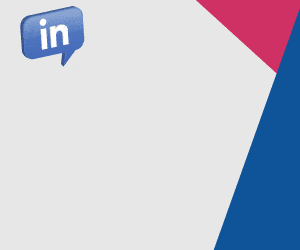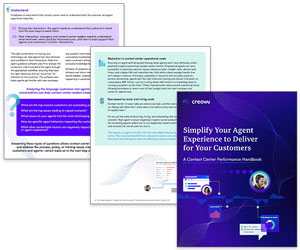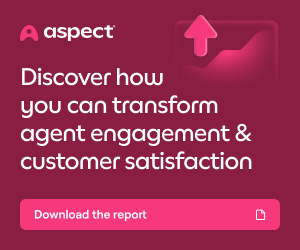It’s never been more important to optimize resources and maximize productivity – but, quite frankly, beating agents with a stick and staring at your wallboards isn’t the way to do it!
That’s why we asked our consultants panel for their best ideas on how to unlock agent productivity in the contact centre – from training and technology hacks right through to wellbeing and engagement tips, which can make the world of difference.
Here’s what they said…
Training and Processes
1. Use the “Cooperative Questioning” Technique to Pre-empt Common Customer Pushbacks

AHT goes up and CSAT goes down when customers get defensive and challenge your agents about why they are being asked a sensitive or obvious question.
Avoid this by training agents to switch the order of the conversation. Instead of asking a sensitive question and then responding to the customer’s pushback, agents should first position how the customer benefits from answering the question, followed by the question itself.
For example, an IT service desk agent who needs to ask “Can you please reboot your laptop?” is often met by “I’ve already tried that, why do you think I’m calling you?!” – an exchange that wastes everyone’s time.
However, if the agent first explains the benefit of the customer’s cooperation – such as saying, “To ensure we are working from the same baseline, could you please reboot your computer? That will help us move forward more effectively.” – the customer will almost always respond with something like, “OK, I did reboot already, but I’ll do it again now.”
Note, agents don’t need to use this approach for every question, but you can easily identify where this technique can have the biggest impact by asking your agents “Which questions do you get the most pushback on?”
Contributed by: Mike Aoki, President of Reflective Keynotes Inc.
2. Focus on the Agents Who Are Trying Their Best But Still Getting It Wrong

Productivity isn’t as clean cut as most people make out. For example, “Is Sarah the agent lazy or not?”
In more recent years, a new type of agent persona has emerged – the one of the hard worker who’s trying their best, but their after-call work (ACW) time is high and their calls are lower than the team’s average.
This, for me, comes down to process and uniformity. Is Sarah using email templates? Is she making notes in her paper notebook then rewriting them into the CRM after the call? You need to find out fast.
Productivity conversations should be a part of every agent check-in and monthly 1-2-1. The conversation should be tailored around the agent and asking them, for example, “how can we improve your metric X score?”
Do the investigation work first, as you need to understand why your agent’s KPIs are above or below. Is it process? Understanding? Do they need reminding of certain tools that are available?
Once you’ve repointed them in the right direction, it will be up to them to improve their AHT themselves.
Contributed by: Alex McConville, Contact Centre Consultant and author of ‘Diary of a Call Centre Manager’
3. Ask Your Agents Where They Think Company Process Issues Are
To improve agent productivity, it’s best to view it as a RESULT vs. a GOAL. It’s always a result of something, and the quick win is to identify which ‘something’ it is that would have the biggest impact on productivity if it were to be improved.
As company productivity can have an even larger impact on your overall productivity, it can really help to ask your agents these 3 questions from a customer perspective:
- What one process is having the biggest impact? E.g. empowerment, hand-offs or transfers to other departments, etc…
- What one system issue is having the biggest impact? E.g. self-service capabilities, system limitations and workarounds, knowledge management issues, etc…
- What’s the one thing that’d make it easier for the customer?
To create true ownership, the agent needs to be involved in both the discovery process and the remediation process.
Contributed by: Adam Boelke, Managing Partner at The Alignment Advantage Group
4. Revisit Your Onboarding Process So Agents Hit the Ground Running

So much time is lost due to customers being on hold, as agents not knowing the answer and reaching out to people to double-check the answer is a massive productivity killer. It increases handling time and impacts customer satisfaction.
So, equip your teams with the right information from the get-go and provide robust training and onboarding on an ongoing basis, refreshing skills and knowledge – and do this practically!
Measure what’s getting searched for in your knowledge base and frequently used articles and shape your training from these resources.
Contributed by: Garry Gormley, Founder of FAB Solutions
For some great advice on how to improve your onboarding process, read our article: 21 Top Tips to Improve Your Agent Onboarding
5. Train Agents to Quickly and Confidently Reassure Anxious Customers

The key skills required in customer service are and always will be soft skills.
These are the interpersonal techniques and approaches that help defuse challenging situations, reassure an anxious or distraught customer and allow opportunities in the conversation for customers to share what they’re experiencing and what they need.
These skills continue to be – active listening, empathy, pausing, responding rather than reacting and staying calm, professional and respectful throughout. It also includes being human-focused and not process-driven.
Contributed by: Helen Pettifer, Director of Helen Pettifer Training Ltd and a specialist in the fair treatment of vulnerable customers
For more information on the essential soft skills your agents need, read our article: 5 Soft Skills Every Agent Needs Before Taking Their First Call
Wellbeing and Employee Engagement
6. Give Agents Clear KPIs and Benchmarks So They Know If They Are on Target
You need to have KPIs and benchmarks so that people know if they are on target – higher or lower. Once you have these in place and clear, then activate gamification.
This could be in the form of software solutions that award points and set up games (and there’s some neat solutions out there right now!)
Alternatively, this can be done for free in any contact centre with Excel and/or a whiteboard. Humans will naturally add an element of competition into AHT or ACW, so make the most of it!
Contributed by: Alex McConville, Contact Centre Consultant and author of ‘Diary of a Call Centre Manager’
If you want information on the fundamental aspects of contact centre benchmarking, read our article: Call Centre Benchmarking 101
7. Double-Check You Are Meeting Your Agents’ Basic Needs First and Foremost

It has its critics – it’s overly simple and it’s 80 years old – but considering your approach through the lens of Maslow’s Hierarchy of Needs is a useful starting point for productivity [1].
Our physiological needs are met when we’re not hungry, thirsty, exhausted, sick, or freezing. Our safety and security needs are met when we feel that we are protected from physical harm, and our emotional wellbeing, our job and financial security, and our overall health is considered. And we’re unlikely to be able to be productive if those base needs are unfulfilled!
In practical terms, we cannot be expected to contribute meaningfully if we’re unsure that our role is safe, that the processes and procedures that we rely upon might fall over, or that the policies we work within don’t have our wellbeing at heart [2].
If inefficient or clunky operating practices mean that additional effort or perceived unnecessary additional work is required, this can be both mentally and physically exhausting. If we also feel that we’ll be penalized for sickness, this might become an unmet need, and there is an impact on productivity.
Asking questions such as ‘Do processes work correctly?’, ‘Are people paid equitably?’ and ‘Are there enough people to perform the role?’ is a useful starting point to consider whether you’re meeting your agents’ needs and use the responses to address your approaches.
[1] Ștefan, S.C., Popa, Ș.C. and Albu, C.F., 2020. Implications of Maslow’s hierarchy of needs theory on healthcare employees’ performance. Transylvanian Review of Administrative Sciences, 16(59), pp.124-143.
[2] Peters, J.F., 1997. An empirical correlation of Maslow’s hierarchy of human needs levels and team performance. The University of Alabama in Huntsville.
Contributed by: Danny Wareham, Founder & Director of Firgun
8. Check Agents Aren’t Being Blamed for Things They Can’t Control

Morale is NOT just an agent being happy to be at work, it includes variables outside employment, and can be positively affected by leaders with more value-added, relationship building, people-supporting leader engagement.
A team leader should genuinely know their people, and the pattern should replicate upwards in the organizational hierarchy.
Also consider whether the agent understands the why in policies, processes, and procedures. Can the team leader answer why questions? Does the agent control behaviours and actions in productivity measuring, or are they being blamed for items they cannot personally control?
Contributed by: Dr M. Dave Salisbury, COO at D&C Consulting LLC
9. Take Extra Care During the Winter Months to Keep Productivity Levels on Track

The winter months can be difficult for lots of people, with around 2 million people being affected by Seasonal Affective Disorder (SAD).
The colder, wetter and darker days not only impact on our wellbeing but they can also negatively influence our productivity levels.
For example, research by Toughened Glade Systems showed that 1 in 3 workers reported that the cold weather is a contributing factor to feeling unproductive during the winter months.
So having a real focus on employee health and wellbeing can help to boost productivity levels during winter. Here are some ideas that may help:
- Encourage employees to get some natural light during the day by having breaks outside and getting some fresh air. Perhaps arrange some walking meetings or team lunchtime walks.
- Rearrange office spaces so that more people are near natural light and keep blinds open throughout the day.
- Raise awareness and have discussions around SAD, as well as sharing resources on how to manage personal wellbeing through the winter months.
- Promote information on how to boost your immune system throughout the winter period – including eating a healthy diet with lots of fruit and vegetables, getting enough sleep, keeping hydrated, and staying active.
- Ensure that people do not come into work if they are ill, as this increases the chances of illness spreading across the office.
Contributed by: Gemma Carter-Morris, Director of Wellbeing and Client Relationships at Next Steps Consulting
10. Focus on the Perks – Not the Pay Cheque!

A lot of people come to work thinking all they want is a pay cheque, but realize they love the benefits far more than the pay cheque.
Of course, they need the pay cheque, but often what keeps them happy and productive is the benefits package and the way the company takes care of them, whether this is flexible scheduling, a generous paid time-off (PTO) programme, or even access to great training.
So, take a closer look at what you offer beyond a pay chequ to keep agent productivity high!
Contributed by: Shep Hyken, Chief Amazement Officer (CAO) at Shepard Presentations LLC
11. Assure Your Agents That Your Intent Is to ‘Coach, Not Catch’

Start any conversations around improving productivity by assuring your agents that your intent is to ‘coach, not catch’, and that the goal is to work together to identify that one thing that is affecting their individual productivity and performance.
Listen to their calls together and have them self-evaluate what they think that one thing might be – and keep it simple.
You don’t want them to get defensive and switch off before you’ve even started.
Contributed by: Adam Boelke, Managing Partner at The Alignment Advantage Group
Technology Hacks
12. It’s Unrealistic to Expect Agents to Know Everything!

It’s unrealistic to expect agents to know everything about their business’s offering or products – particularly in complex environments or where regulation drives a need to be accurate.
Hold times, unnecessary referrals, and frustrated customers often come down to agents not having the right information at their fingertips. That’s why smarter, AI-driven knowledge management tools feel super-important in today’s contact centres.
The best don’t just offer up answers – they anticipate what the agent needs, streamlining the entire conversation. Less faffing about, more getting it right the first time. It means agents can stay focused on the customer, not the system, and do the important ‘human’ bit better and faster.
Contributed by: Rob Clarke, Director and Co-Founder of Elev-8 Performance
13. Help Agents Identify Trigger Words and Customer Sentiment in Real Time

There is continued research highlighting the benefit of AI use during real-time customer conversations.
AI can be used to quickly identify trigger words and/or customer sentiment and alert the agent that a different approach or solution may be needed.
Often these indicators are being missed by agents and only picked up during QA call-listening activities post-event.
Whilst AI and technology can be beneficial, it’s still important to maintain a human interaction with customers, especially those in vulnerable circumstances where a different and more empathetic approach is needed. It’s finding the right balance, and this will be different for every business.
Contributed by: Jenna Birchall, Vulnerability Consultant at Helen Pettifer Training Ltd
14. Save Agents From Wasting Time Writing Up Lengthy Notes
Let technology do the heavy lifting!
Where we see a big benefit is in auto-summarization, as this has two key benefits:
- It helps your agents create their notes, so they don’t lose time writing up lots of lengthy notes.
- It also standardizes the note-taking process, so if they pick up a call from a colleague, they don’t have to decipher their short-hand.
Contributed by: Garry Gormley, Founder of FAB Solutions
15. Make Time for Updates and Culling Outdated Information
AI and your contact centre’s intranet are an absolute example of GIGO (garbage in produces garbage out!).
Meaning if there are outdated pieces of information on the company’s intranet, Murphy’s Law dictates that the agent will find that old data every time and give a customer the wrong or outdated information.
Also schedule in your computer upgrades! It continues to be inconceivable to me that a company has not upgraded agents’ computers in, in several instances, decades.
Contributed by: Dr M. Dave Salisbury, COO at D&C Consulting LLC
What Have You Tried to Unlock Agent Productivity in Your Contact Centre?
Join our LinkedIn community and let us know.
If you are looking for more advice on improving contact centre productivity, read these articles next:
- Tools and Techniques to Boost Advisor Productivity
- How to Calculate Productivity in the Contact Centre
- 30 Tips on How to Improve Contact Centre Productivity
Author: Megan Jones
Reviewed by: Xander Freeman
Published On: 29th Jan 2025 - Last modified: 15th Sep 2025
Read more about - Call Centre Management, Adam Boelke, Agent Performance, Alex McConville, Danny Wareham, Dave Salisbury, Editor's Picks, Employee Engagement, Garry Gormley, Gemma Carter-Morris, Health Wellbeing and Stress, Helen Pettifer, Jenna Birchall, Management Strategies, Mike Aoki, Productivity, Rob Clarke, Shep Hyken, Top Story, Training and Coaching


















